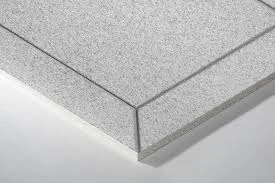- Afrikaans
- Albanian
- Amharic
- Arabic
- Armenian
- Azerbaijani
- Basque
- Belarusian
- Bengali
- Bosnian
- Bulgarian
- Catalan
- Cebuano
- Corsican
- Croatian
- Czech
- Danish
- Dutch
- English
- Esperanto
- Estonian
- French
- German
- Greek
- Hindi
- Indonesian
- irish
- Italian
- Japanese
- Korean
- Lao
- Malay
- Myanmar
- Norwegian
- Norwegian
- Polish
- Portuguese
- Romanian
- Russian
- Serbian
- Spanish
- Swedish
- Thai
- Turkish
- Ukrainian
- Uzbek
- Vietnamese
Dez . 25, 2024 13:26 Back to list
Fire-Resistant Ceiling Access Hatch for Enhanced Safety and Convenience
Understanding Fire Rated Ceiling Access Hatches
In modern architecture and construction, safety and compliance with building codes are paramount considerations. One crucial aspect of safety in commercial and residential buildings is fire protection. This is where fire-rated ceiling access hatches play a significant role. These hatches are designed not only to provide access to spaces above ceilings but also to protect against the spread of fire and smoke, ensuring the safety of occupants and integrity of the building’s structure.
What is a Fire Rated Ceiling Access Hatch?
A fire rated ceiling access hatch is a specially designed panel that allows access to the area above a ceiling, such as a roof void or mechanical space, while providing a level of protection against fire. The 'fire rating' refers to the hatch’s ability to resist exposure to fire for a specified period, usually classified in hours (for example, 30, 60, or 90 minutes). This rating is crucial in maintaining the overall fire resistance of a building's ceiling assembly.
Typically constructed from robust materials such as steel or fire-resistant gypsum, these access hatches are engineered to seal tightly when closed, minimizing openings that could allow fire and smoke to spread. They are often equipped with intumescent seals that expand when exposed to heat, filling any gaps and further enhancing their fire-resistive properties.
Importance of Fire Rated Access Hatches
1. Compliance with Building Codes Many local building codes and fire safety regulations require the installation of fire rated access hatches in specific areas of a building, especially in commercial facilities and multi-family dwellings. Compliance helps avoid legal repercussions and enhances the safety of the building.
2. Enhanced Safety In the event of a fire, prevention of fire spread is critical. Fire rated ceiling access hatches help compartmentalize a building, providing a barrier between areas and delaying the spread of flames and smoke, allowing occupants more time to evacuate.
fire rated ceiling access hatch

3. Access to Critical Systems Above ceilings, there are often essential systems such as HVAC, electrical wiring, and plumbing. Fire rated access hatches provide a convenient entry point for maintenance and inspections without compromising fire safety.
4. Cost-Effectiveness While the initial installation cost might be higher than standard access hatches, the long-term savings from reduced fire damage and potential liability claims can be substantial. Moreover, they contribute to a building's overall fire protection strategy, which can lead to lower insurance premiums.
Selection and Installation
When selecting a fire rated ceiling access hatch, several factors need consideration. The fire rating needed will depend on the specific building code requirements and the intended location of the hatch. Additionally, the size and design of the hatch should be compatible with the building’s layout and requirements for maintenance access.
Installation must be performed by qualified professionals to ensure that the hatch is correctly fitted and sealed, meeting all relevant fire safety standards. Regular inspections and maintenance are also recommended to ensure the hatch continues to function as intended over time.
Conclusion
Fire rated ceiling access hatches are a critical component in modern construction, balancing functionality with safety. They enable easy access to essential systems while simultaneously providing fire protection, complying with building codes, and enhancing the overall safety of a building. As regulations continue to evolve and the emphasis on fire safety grows, understanding the role and importance of these access hatches will be increasingly vital for architects, builders, and property owners alike. Investing in fire rated access solutions not only protects the structural integrity of a building but also safeguards the lives of those who inhabit or use the space.
-
Transform Interiors with PVC Gypsum Ceiling: A Stylish, Durable, and Moisture-Resistant SolutionNewsMay.19,2025
-
The Smart Interior Upgrade: Discover the Durability and Versatility of Gypsum Ceiling Access Panel SolutionsNewsMay.19,2025
-
The Smart Choice for Interior Design: Discover the Value of PVC Gypsum Ceiling SolutionsNewsMay.19,2025
-
Mineral Fiber Ceiling Tiles: The Smart Blend of Performance and AestheticsNewsMay.19,2025
-
Mineral Fiber Ceiling Tiles: The Superior Choice Over Gypsum for Sound and Fire SafetyNewsMay.19,2025
-
Mineral Fiber Ceiling Tiles: Eco-Friendly Strength and Style for Every CeilingNewsMay.19,2025







